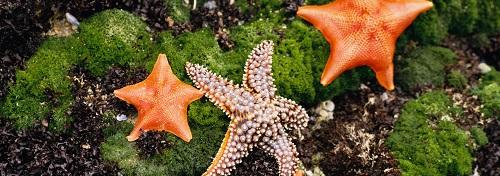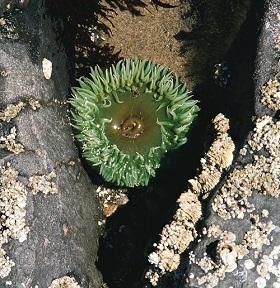River subbasins more depleted than
official figures show
09 April 2024
Published online 6 August 2013

Our oceans are home to a multitude of eye-catching animals, from spiny sea urchins, starfish, biscuit-shaped burrowing sand dollars to undulating sea lilies. A cigar-shaped fossil unearthed in 2012 in Morocco's Anti-Atlas mountain range may help explain their origin.
The fossil is of a marine animal that lived in the sea about 515 million years ago, according to a study published in the Proceedings of the Royal Society B1.
"This species, Helicocystis moroccoensis, named after the country where it was found, has features that place it as a missing link between helicoplacoids, the oldest known echinoderms, and the ancestors of echinoderms such as sea lilies and starfish," says study co-author Andrew Smith at the Natural History Museum in London.
Like modern echinoderms, such as starfish, the species had a fivefold symmetry in their body shape. "It shows a novel and unexpected mix of echinoderm characteristics," says Smith, which could help explain how early echinoderms diverged and evolved their unique body plans.
According to Smith, the animal had spiral body plates like a helicoplacoid but also had a terminal mouth like the ancestors of present-day starfish and sea urchins. It also displays a cup and stem, body parts similar to those of the ancestors of sea lilies.
The 4 cm long sea creature was able to contract and expand its cylindrical body to lunch at food floating past. Five grooves running the length of its body connected to the mouth and could capture bits of food floating in the water.

© GETTY
The fossilized creature thrived during the Cambrian explosion – a period when the number and variety of species on Earth experienced unprecedented growth. The sediments in the Anti-Atlas were littered with other peculiar echinoderms with diverse body plans ranging from asymmetrical to bilaterally symmetrical.
"The new fossil and the neighbouring fossils show that the divergence of body plans was taking place very rapidly in the Cambrian – within 15 million years of the evolution of a calcite skeleton [a skeleton formed of calcium carbonate]," explains Smith.
"This discovery is exceedingly important in understanding a major transition in the history of life: the development of pentaradial symmetry in echinoderms," says geologist Carlton E. Brett from the University of Cincinnati in Ohio. It provides a snapshot of life near the root of an entire phylum, he adds.
According to Brett, such rapid evolutionary changes are at odds with Darwinian evolution, which normally requires extremely long stretches of time to affect such major changes with gradual natural selection. But such changes, he believes, may lead to major lineages during times of evolutionary-ecological opportunity such as the relatively open marine ecosystems of the early Cambrian.
doi:10.1038/nmiddleeast.2013.122
Stay connected: